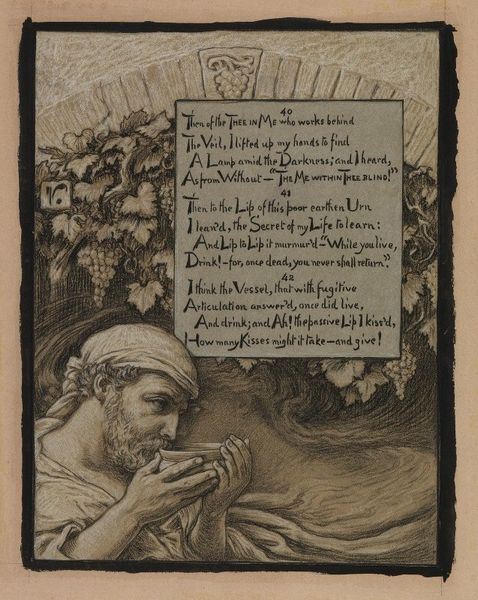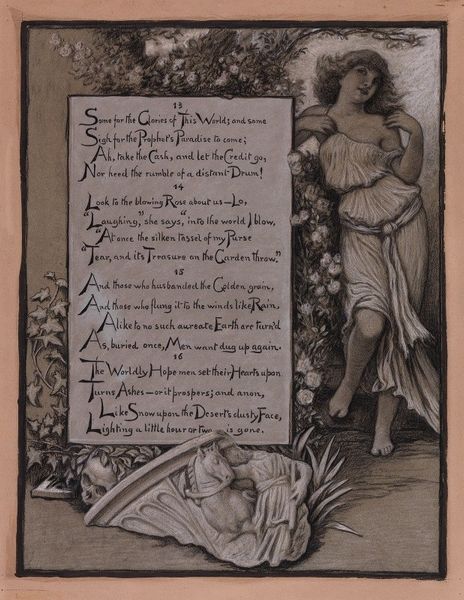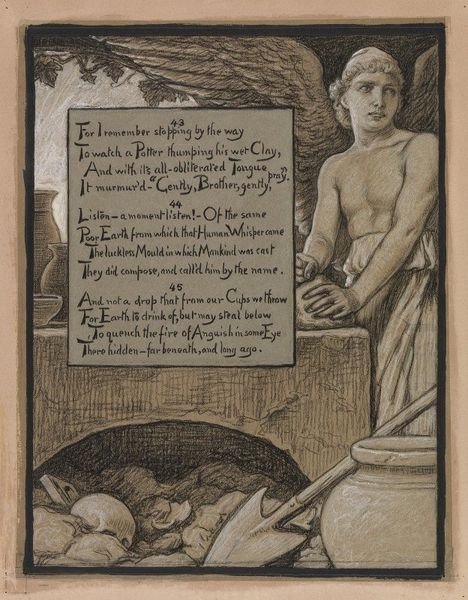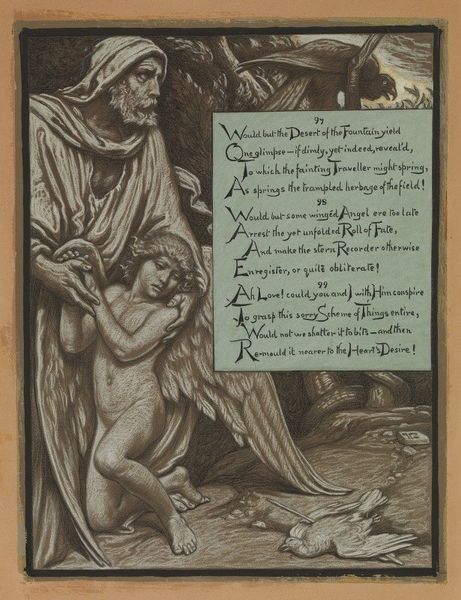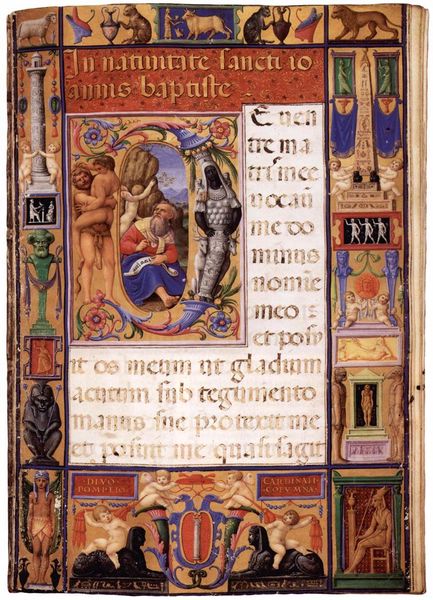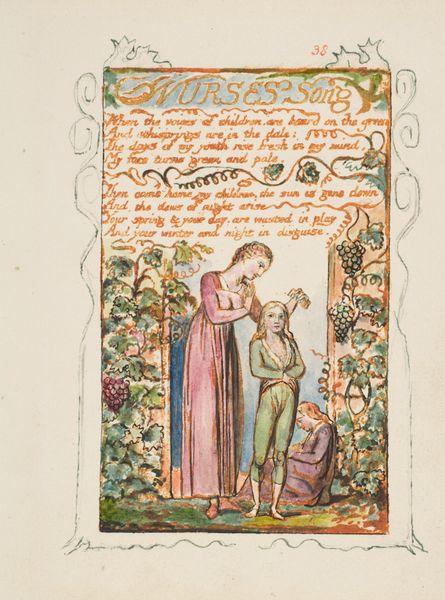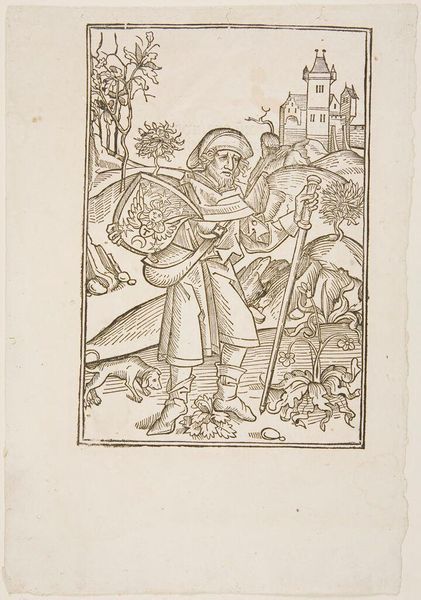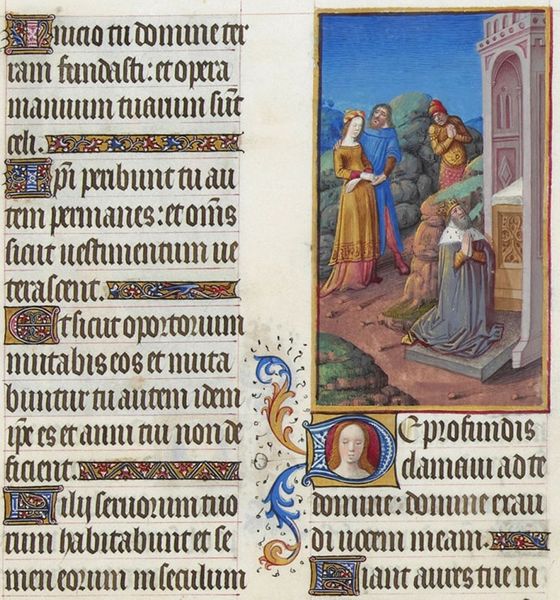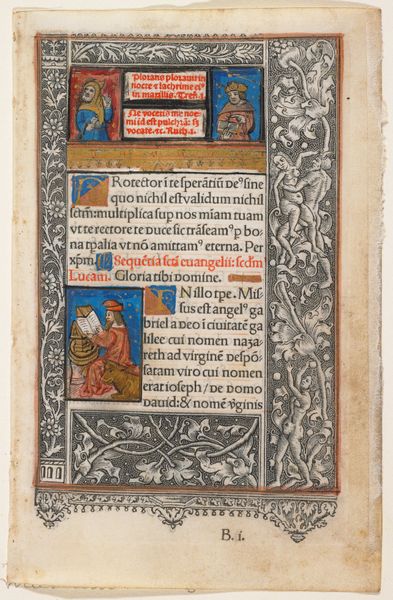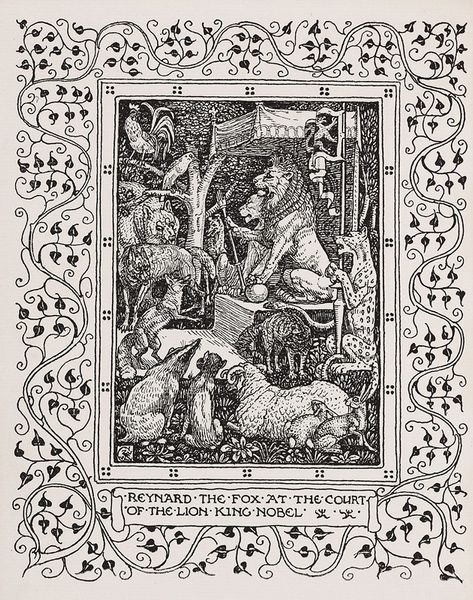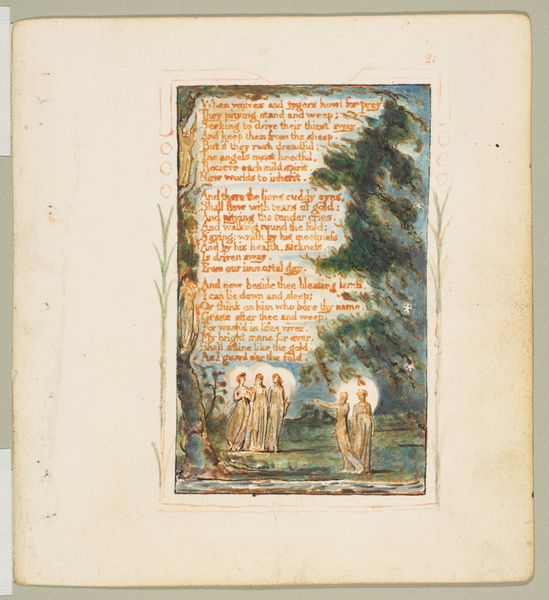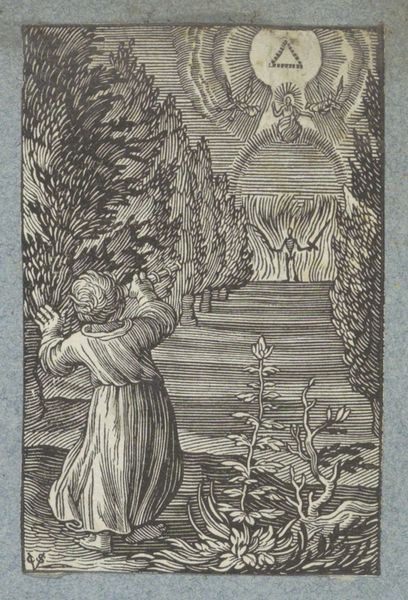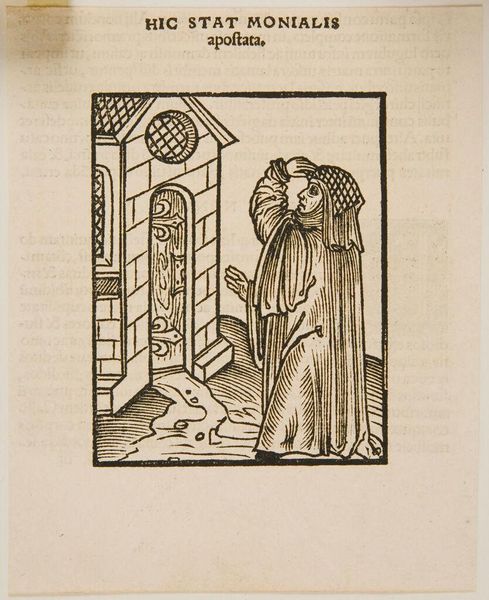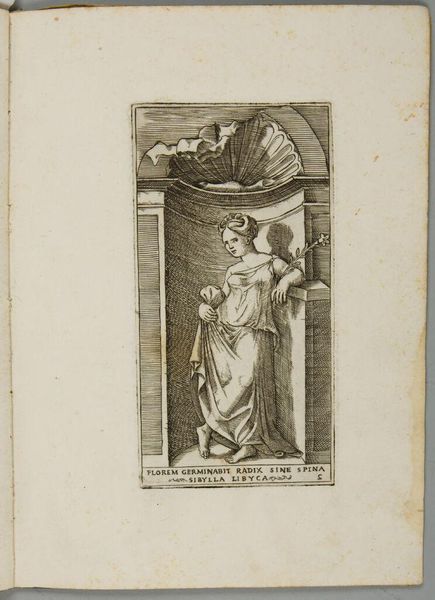
The Rubaiyat of Omar Khayyam, text and decoration by Morris with illustrations by Burne-Jones
0:00
0:00
painting, watercolor
#
painting
#
figuration
#
text
#
watercolor
#
romanticism
#
watercolour illustration
#
pre-raphaelites
#
botanical art
#
watercolor
Copyright: Public domain
Curator: At first glance, this piece presents an unusual juxtaposition of image and text, evocative yet subtly melancholic. Editor: Yes, that muted palette, combined with the weight of the scene above, it feels both intimate and distant. The subdued blues and earth tones contribute to that wistful air. Shall we dive in? Curator: Indeed. What we have here is an illustration by William Morris, with text and decoration also by him and figures illustrated by Burne-Jones for "The Rubaiyat of Omar Khayyam." This particular illustration seeks to visually and textually interpret the famous verses of the Persian poet. Editor: I'm drawn to the composition; how the figurative scene is framed like a painting within the broader page. There's an intentional layering, both spatial and textual. It calls attention to the artistry involved in book production. Curator: Precisely. Morris, deeply concerned with social reform, positioned artistic book design and production as accessible. The themes—mortality, love, nature—were rooted in romanticism. But for Morris and many of the Pre-Raphaelites it spoke to a broader disillusionment with the rapidly industrializing world and also sought beauty, or created a need for it, where he felt there was exploitation. Editor: You can definitely feel that in the almost reverential treatment of the natural elements. The botanical motifs embracing the text underscore this connection to the earth, perhaps a longing for simpler times. Notice the way Morris uses stylized lettering too. He's emphasizing craftsmanship. Curator: The poem also is really integral here. Considering Edward Fitzgerald's interpretation, "The Rubaiyat" became a medium to voice questioning and romanticism of that moment and gave new space to discussions about doubt in a Eurocentric paradigm in society. Editor: Thinking about semiotics and colour now: blue, traditionally associated with tranquility or melancholy, and juxtaposed it against those earthy greens to signify the transience and value of both nature and love, but perhaps a commentary about change that would not give way. Curator: It's such a dense creation when you think of how artmaking, writing, historical events, reform are weaved into this illustration. Editor: Absolutely, and the visual language offers such layered interpretations! Curator: I agree entirely! Editor: Beautiful piece.
Comments
No comments
Be the first to comment and join the conversation on the ultimate creative platform.
